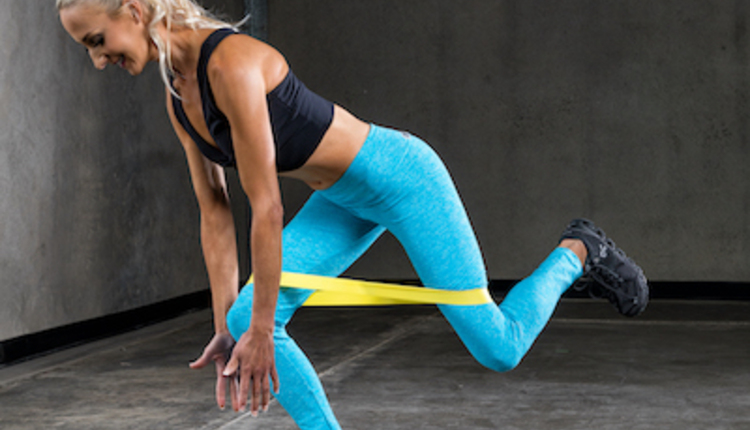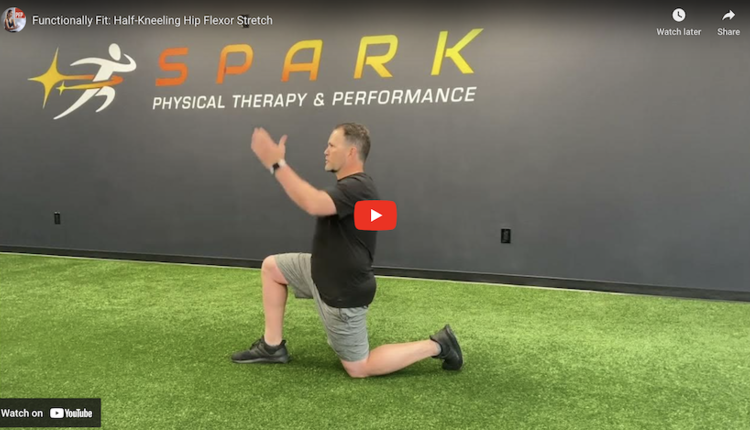Over the last several years, more and more tools and gadgetshave been addedto a fitness professional's toolbox. With the clutter in ourtoolboxes, we oftenforget the tools that got us to where we are.
Let's take a step back, clear out the clutter and revisit afew of the most reliabletools. Getting reacquainted with resistance bands, stabilityballs and foam rollerswill help your clients and give you more variety in yourexercise selection.
Resistance Bands/Resistance Tubing
Resistance bands initially were primarily a tool used if aclient could not getto the gym or for post-rehabilitation exercises afterfinishing with physicaltherapy. Now, they offer added variety and versatility toany workout.The classic resistance bands varied in color, collected dirtand wore out.Now tubing is more durable, has a protective casing and mayhave carabineersattached to its ends. These updates give fitnessprofessionals so manymore options when it comes to exercises and diversifiedtraining.
Resistance bands can be used to exercise almost any part ofthe body andcan be combined with other tools in order to make exercisesmore challenging;you can use them to activate stabilizing muscles whenperforming anexercise or to target stability in a plane of movement.
Here are two exercises that are great to incorporate withresistive tugging:
Explosive Press
Place the band underneath both feet, start by squatting downand holdingthe handles of the tubing at shoulder height. Now come outof the squat andpress overhead or above shoulder height. This is a greatcompound exercisefor the upper and lower body.
Resisting Rotation Press
Affix the tubing to something secure such as a pole orstationary exercisemachine. Stand perpendicular to where the band is affixedandpull the band away, pushing the band in front of your chest,ensuringproper resistance. While holding the tubing, press thetubing out front,return to the start, press above shoulder height, return tothe start andpress below waist height. If the exercise is easy, you cantry it standingon one leg. This is an often-overlooked exercise that hitsanti-rotationof the core.
Stability Balls
The stability ball also has its roots in rehabilitation therapy.It became popularas a tool for strengthening the core and improving balanceand grewfrom there. Though available in different sizes, materialsand thicknesses,not much has changed in the stability ball; it is still invirtually every gymand every other person's home as an equipment staple.
The stability ball creates an unstable surface, can act as abench and is a greathome-training tool for improving balance and coordination.Here are a few go-toexercises you can do with your clients to add new variety totheir workouts:
Single Arm Row
Lie face-down on the stability ball, stabilizing your torsoon the ball. Holda dumbbell in one arm and perform a single-arm row. Makesure to focuson bringing the shoulder blade towards the spine. This is agreat exerciseto target the mid-back and I guarantee that your client willfeel the work intheir mid-back.
Single Leg Kicks
Place the stability ball against the wall, leaning againstthe stability ball atyour hip height. Shift your weight on your right leg andslightly bend yourleft leg, off of the floor. Next, perform a single leg squatdown with the leftleg, shift it slightly back. Come out of the single legsquat and straightenthe left leg. Repeat both sides. This is a great exercisefor clients that playkicking sports and targets the outer hip which most peopletend to be weak.
Foam Roller
In the past, the foam roller was used to perform corestability exercises andself-myofascial release (SMR) exercises. Now foam rollerscome in differentsizes, different densities and have improved durability,offering new opportunitiesto utilize in training. They have gained popularity in correctiveexerciseand SMR but can also be a great tool as part of a resistanceworkout.
Hamstring Curl
You may see people using a stability ball to do thisexercise but using thefoam rollers makes it far more challenging. Lying on yourback with yourfeet on the foam roller, bridge up and then bring your heelstowards yourhips. When you have moved your heels as far back as you can,slowly returnthem back to the start. This exercise hits the hamstringsintensely. To pickup the intensity of the exercise, increase the range ofmotion of the exercisein your knees or do it with one leg. After doing thisexercise, your clients willhave a new respect for the foam roller.
Half Kneeling Arm Raise
In a half-kneeling position on a half foam roller, yourupper body is tall andyour hands out front. Move one arm at a diagonal across thebody and track itwith your eyes. When your arm is in line with your body,return and track thearm back to the start. This is not a muscle "burner"but it works on balance,core and mobility. It is a novel exercise to do at the endof a client's workout.
Attending frequent fitness conferences and trade shows andclosely followingtrends in the industry, it is easy to collect all kinds ofnew tools andtechnology for our clients. It's important that wefrequently go back andrevisit some of the "basic" tools in ourrepertoire. Resistance bands, stabilityballs and foam rollers can be your go-to tools to addvariety and effectivenessto your clients' workouts.
Rick Kaselj, MS, BSc, PK, CEP, CPT, CES is a personaltrainer who focuses on designing exercise programsfor clients recovering from injuries. He shares his tips,tricks and exercises through his books, courses,presentationsand active blog. To learn more about Rick, visithis blog, www.ExercisesForInjuries.com.














